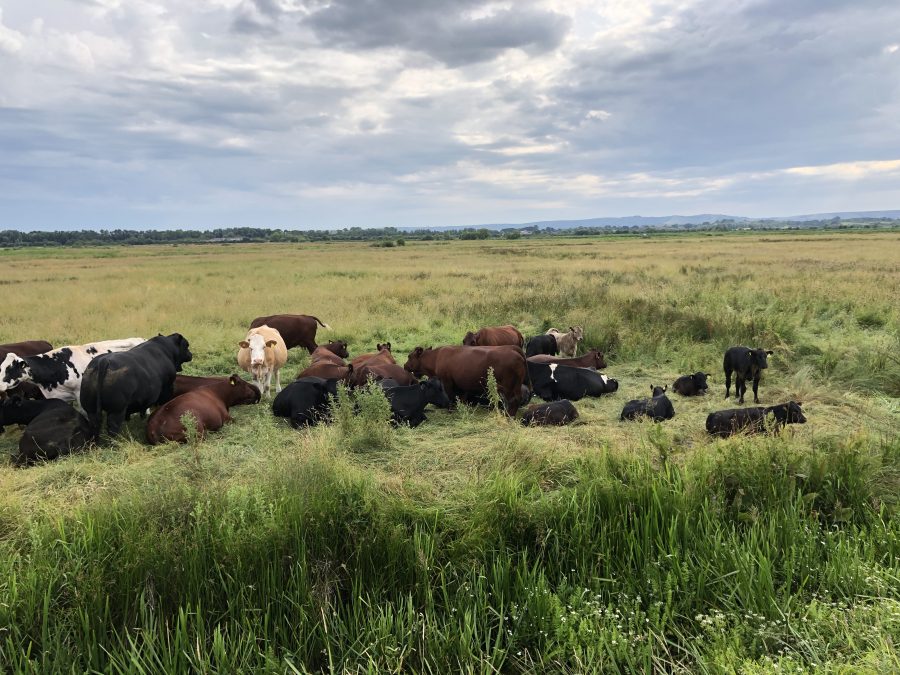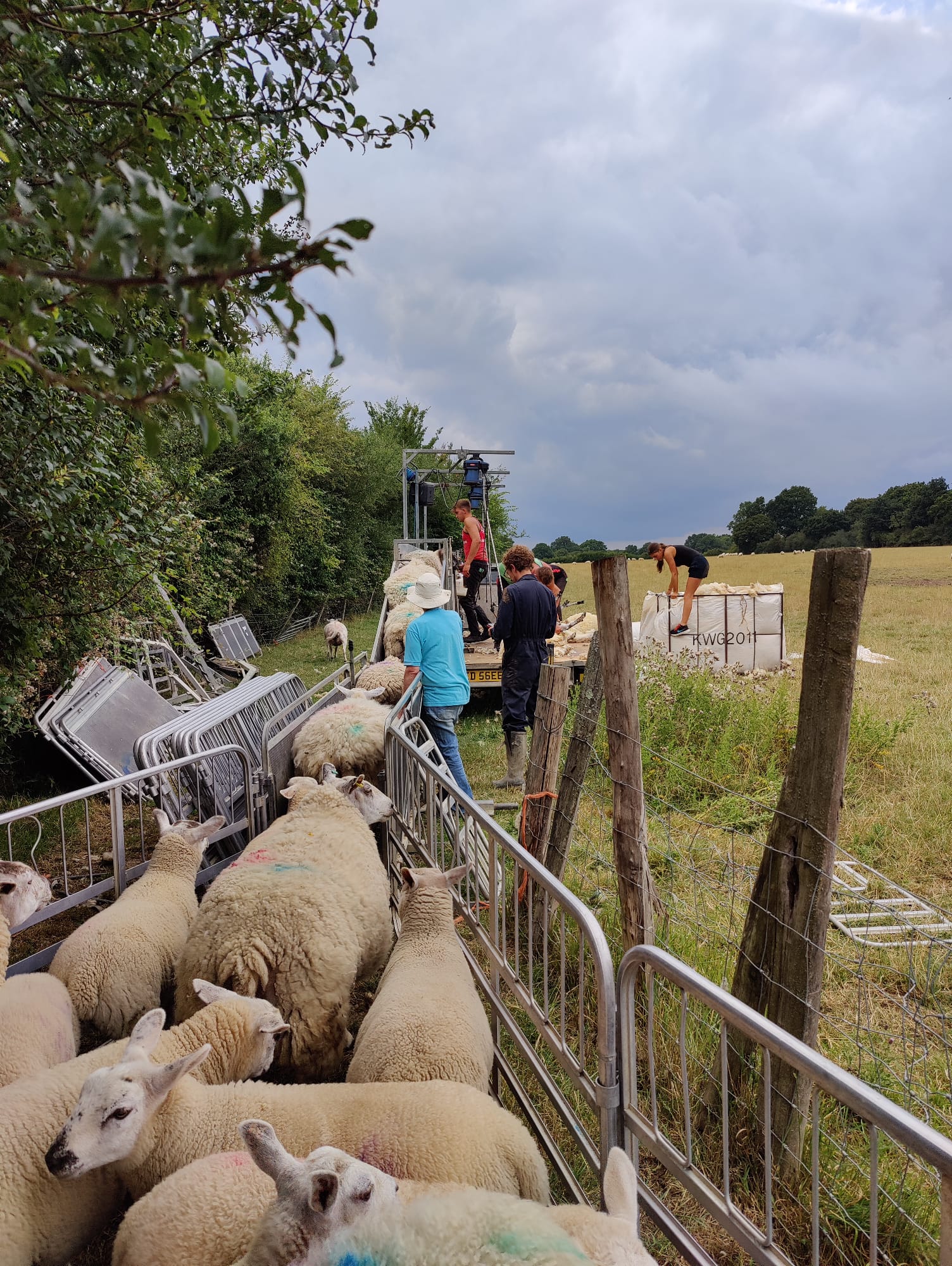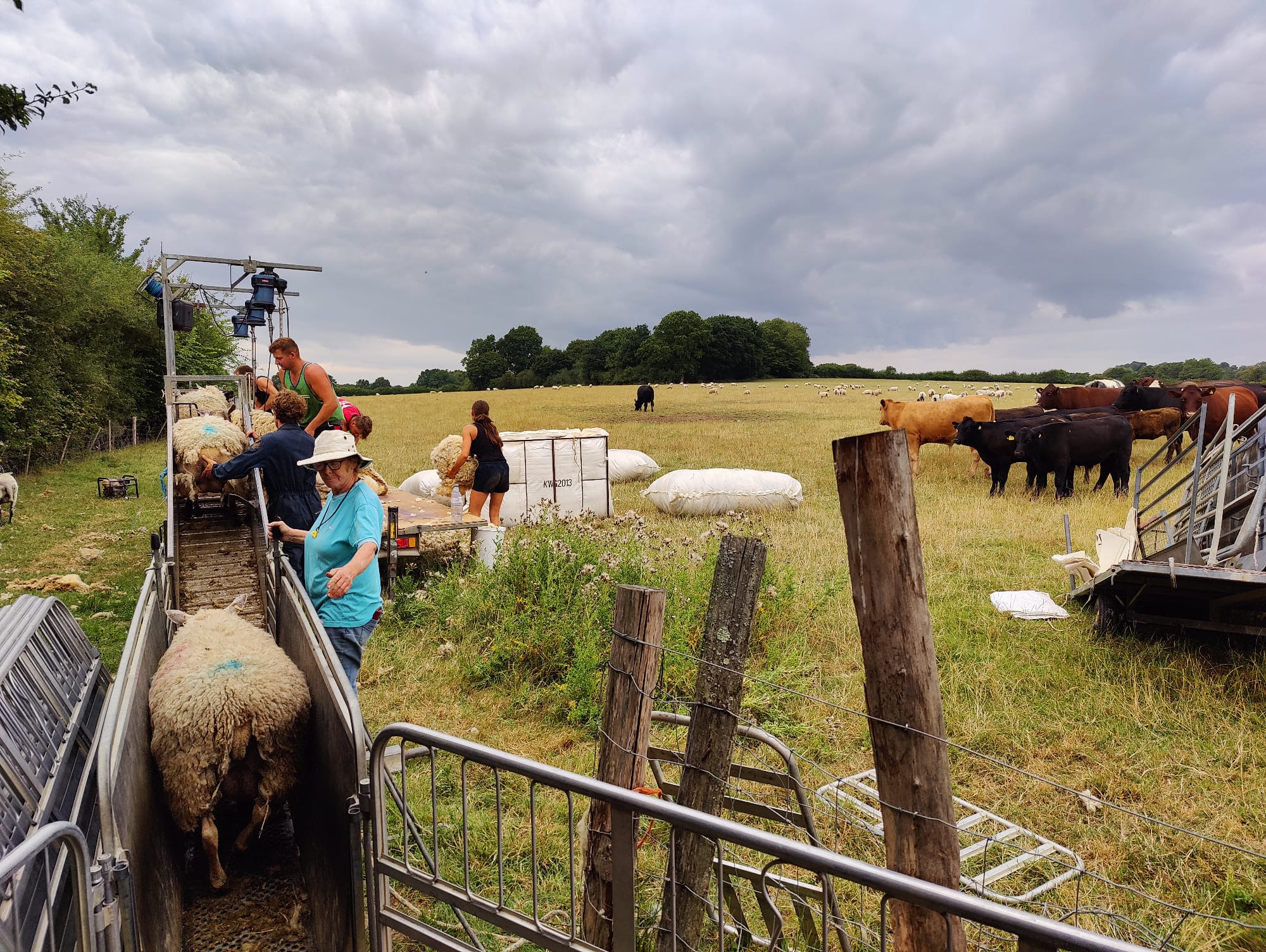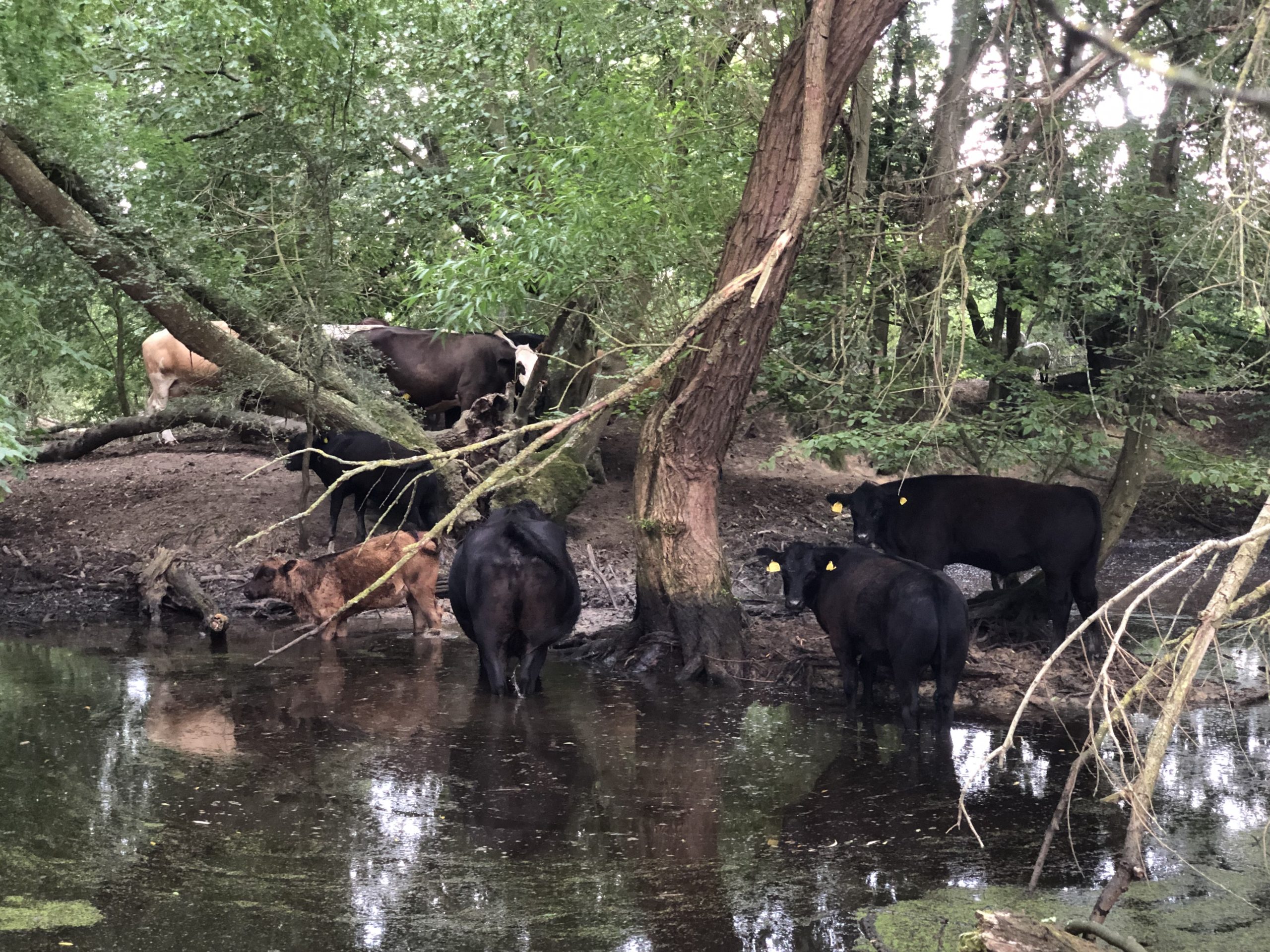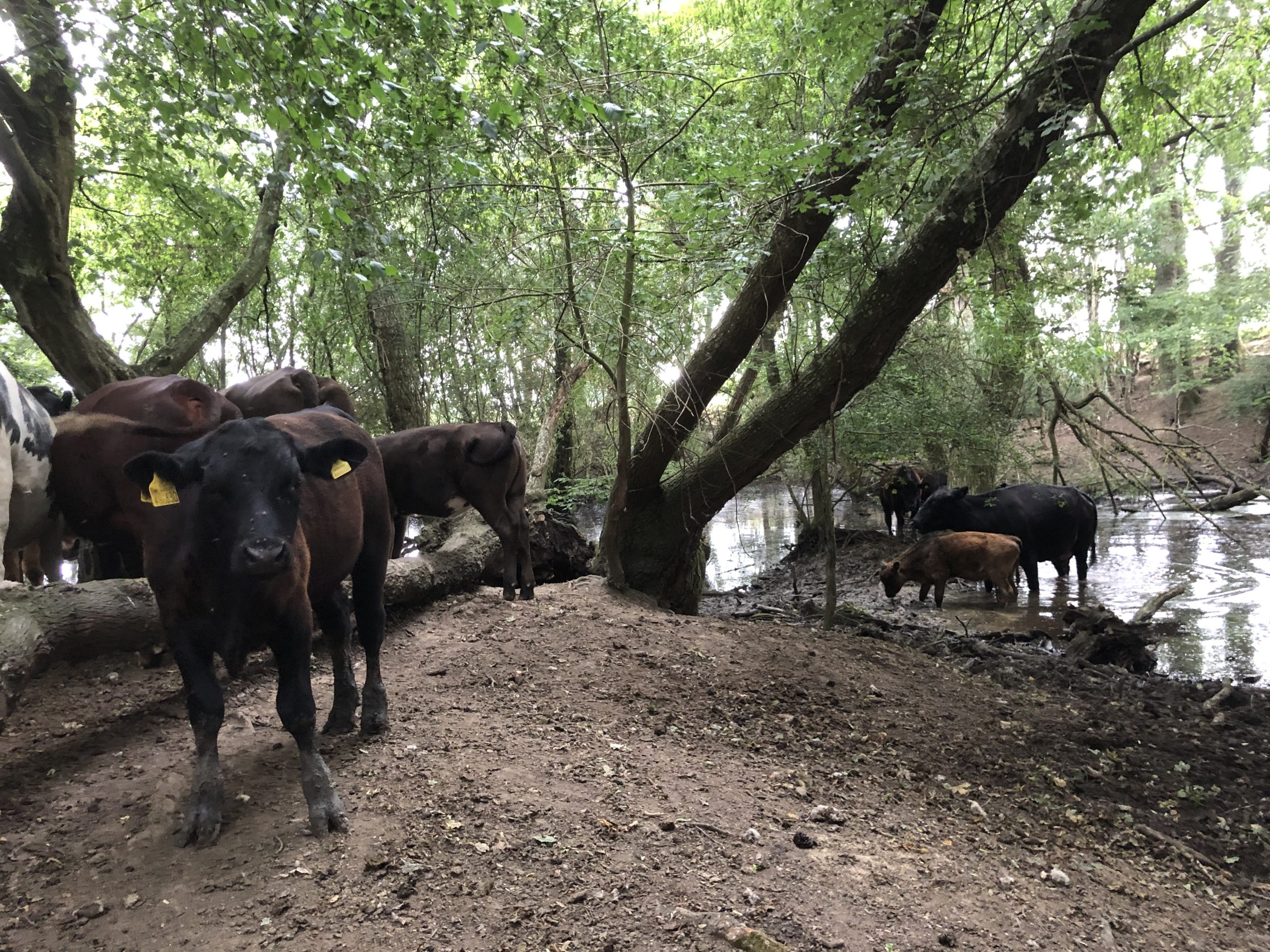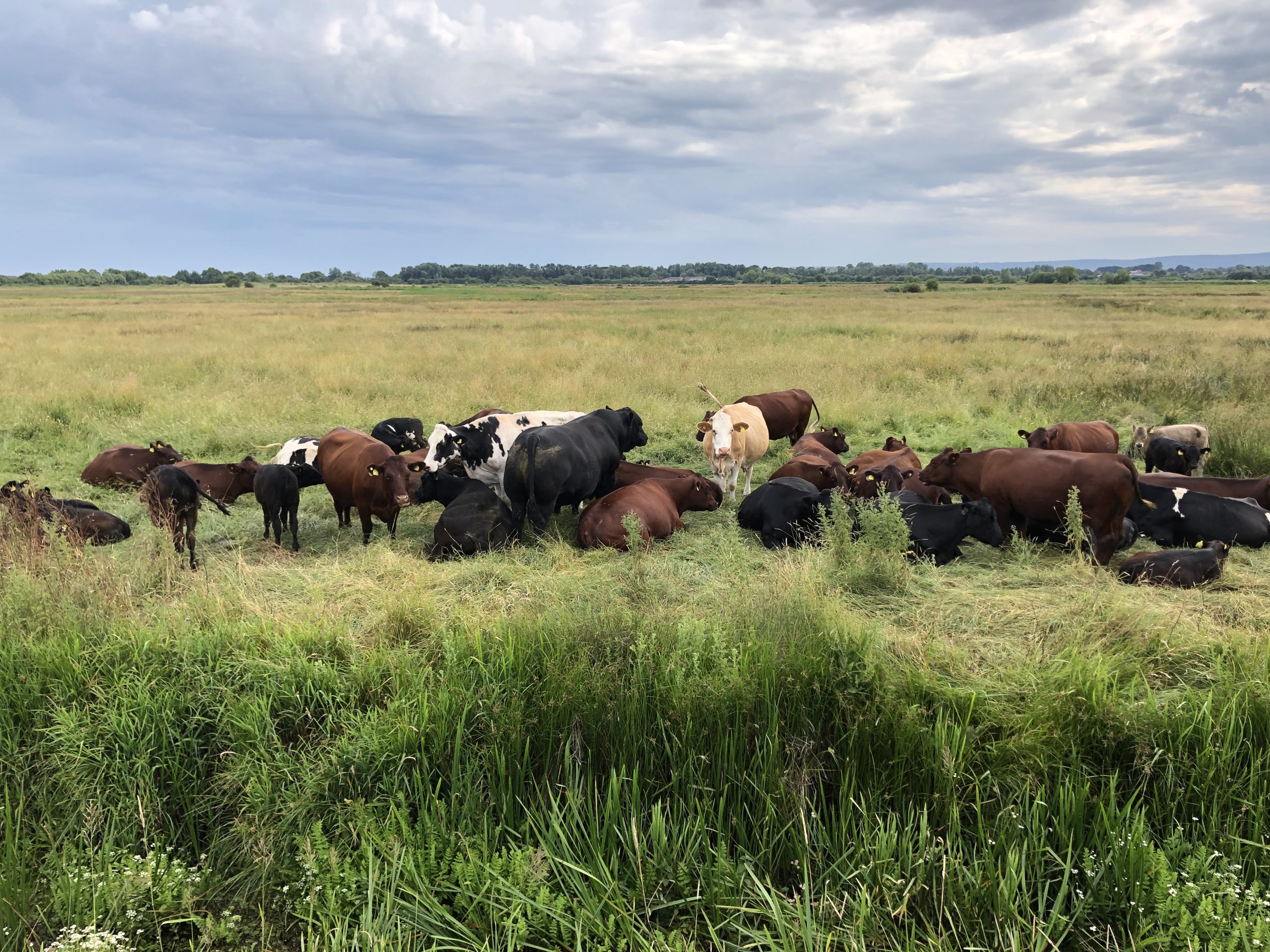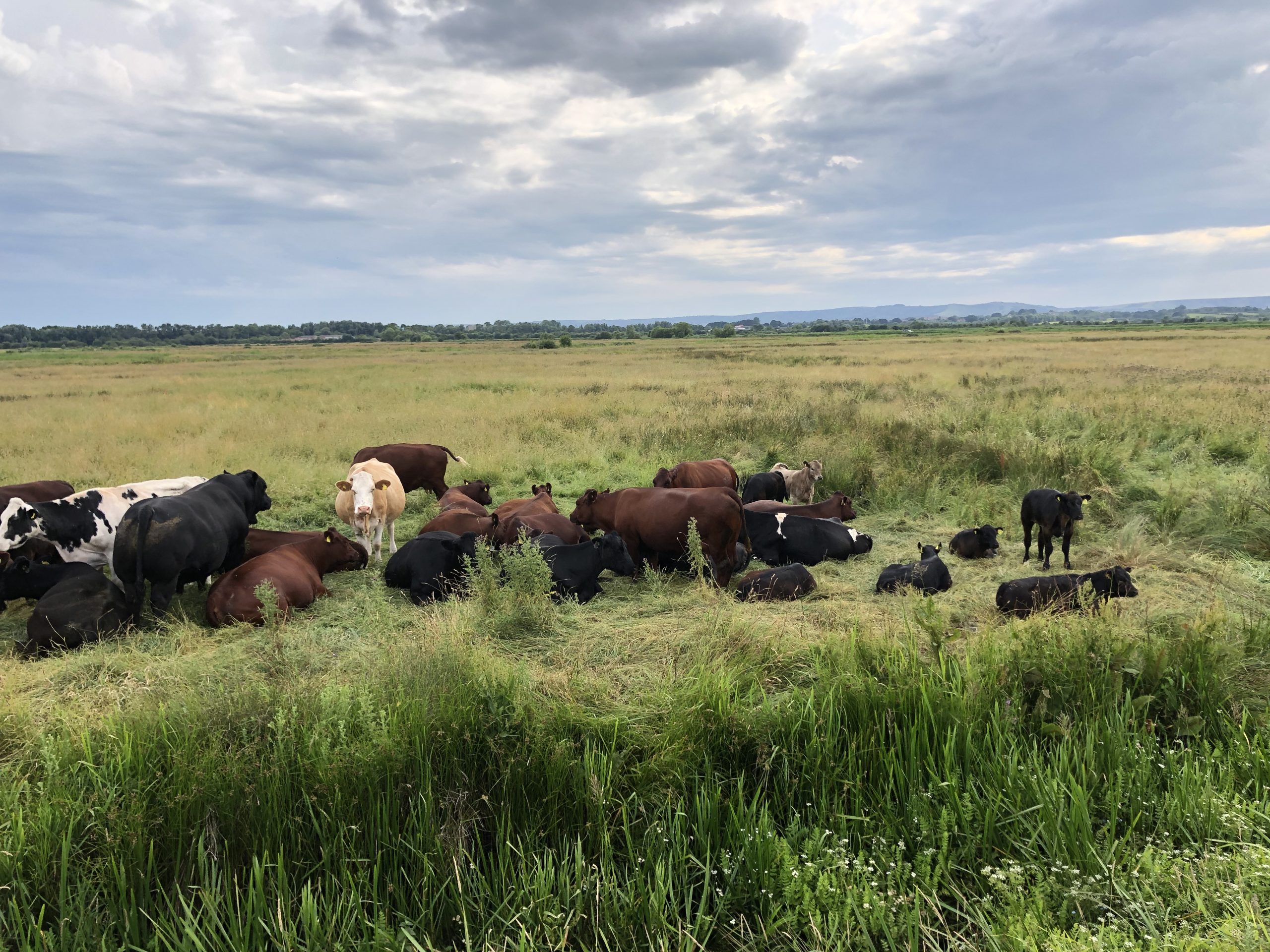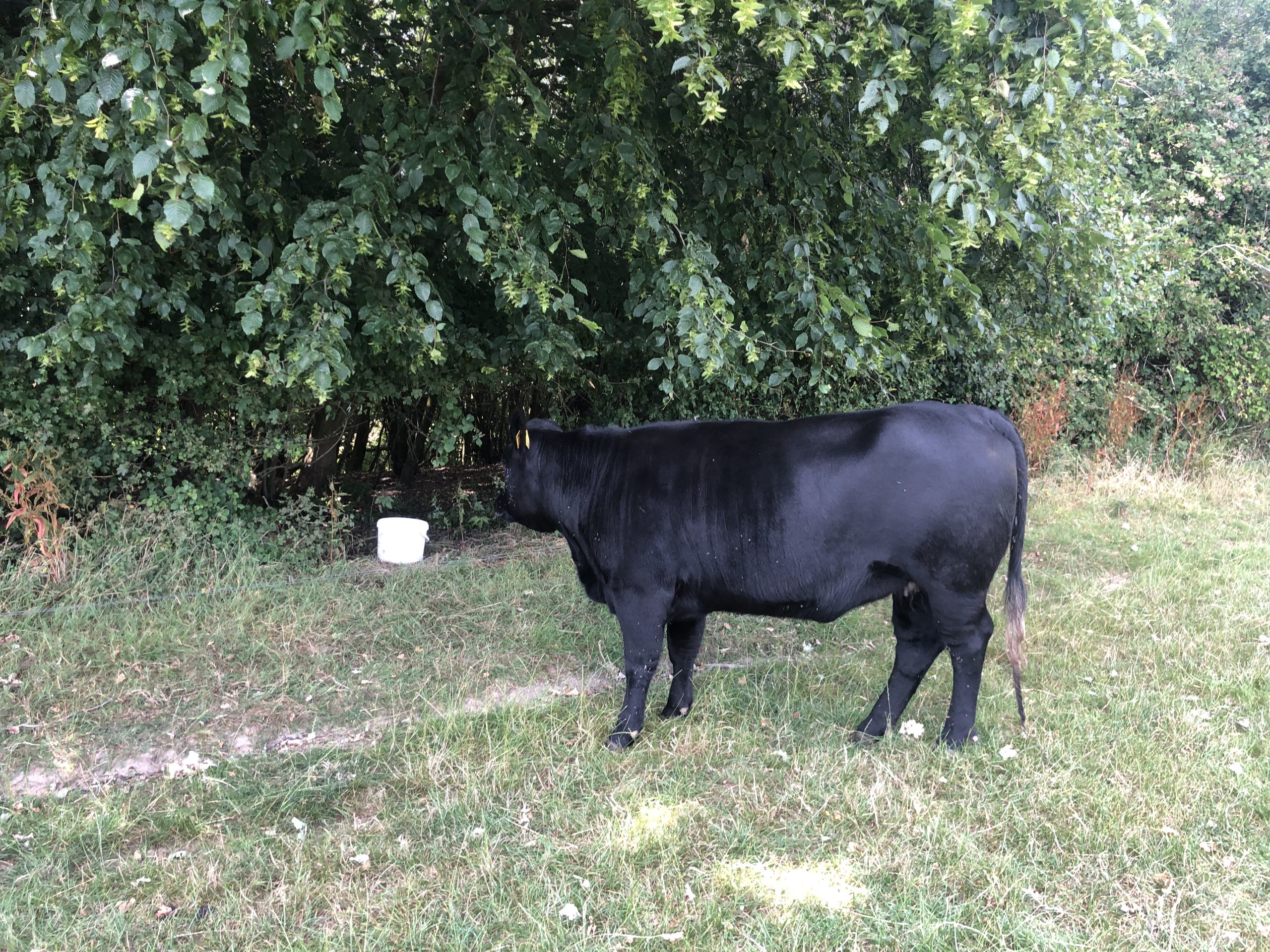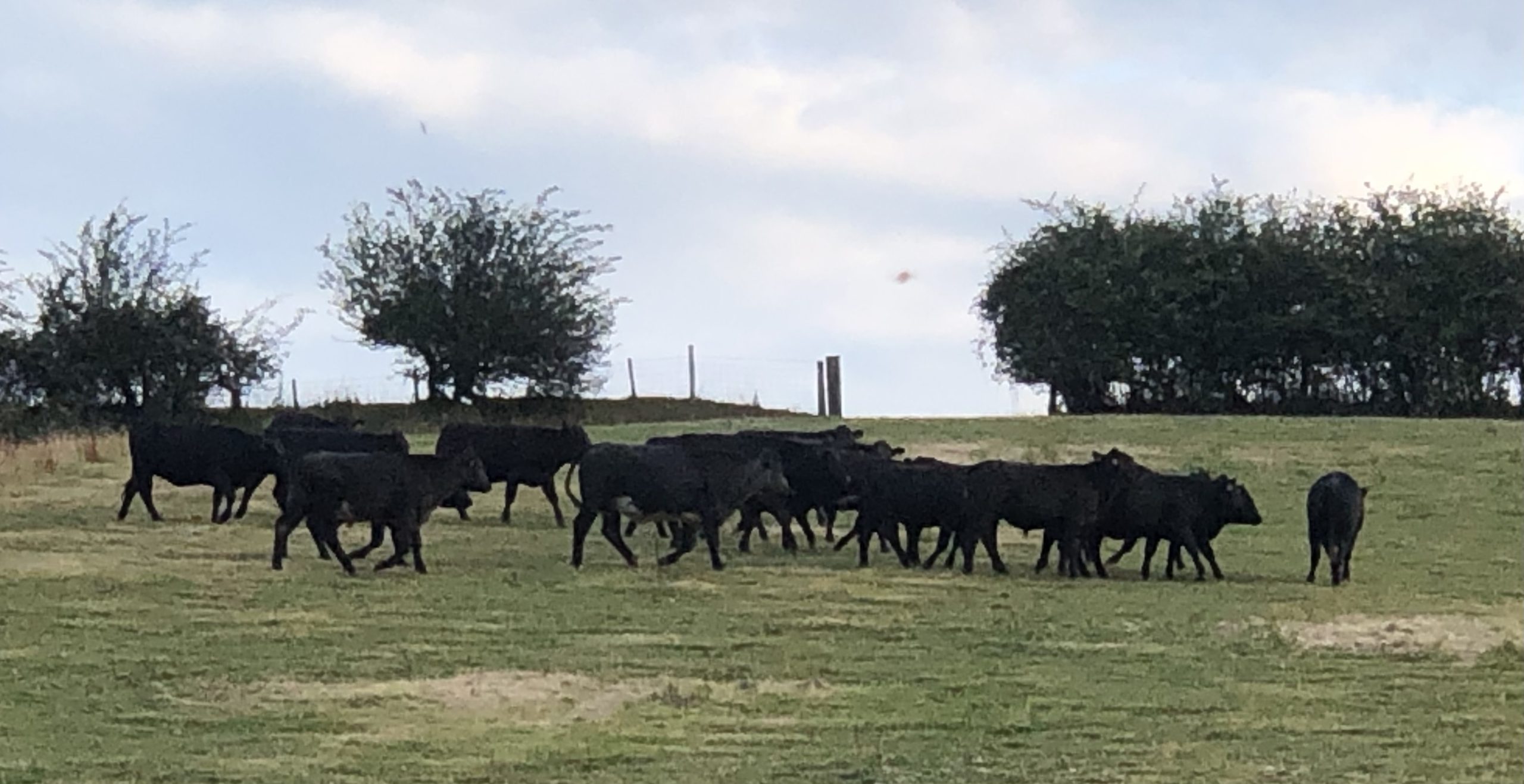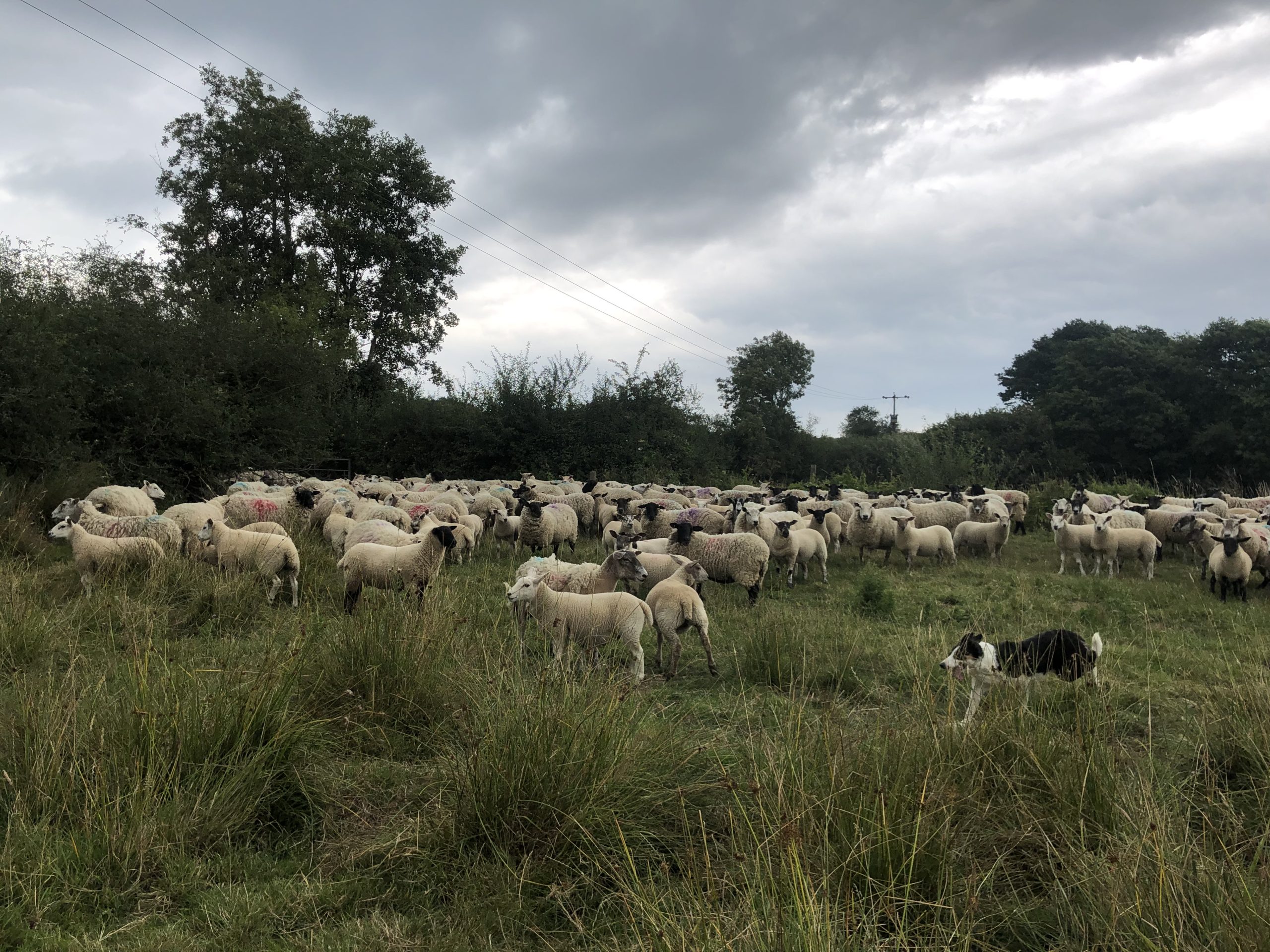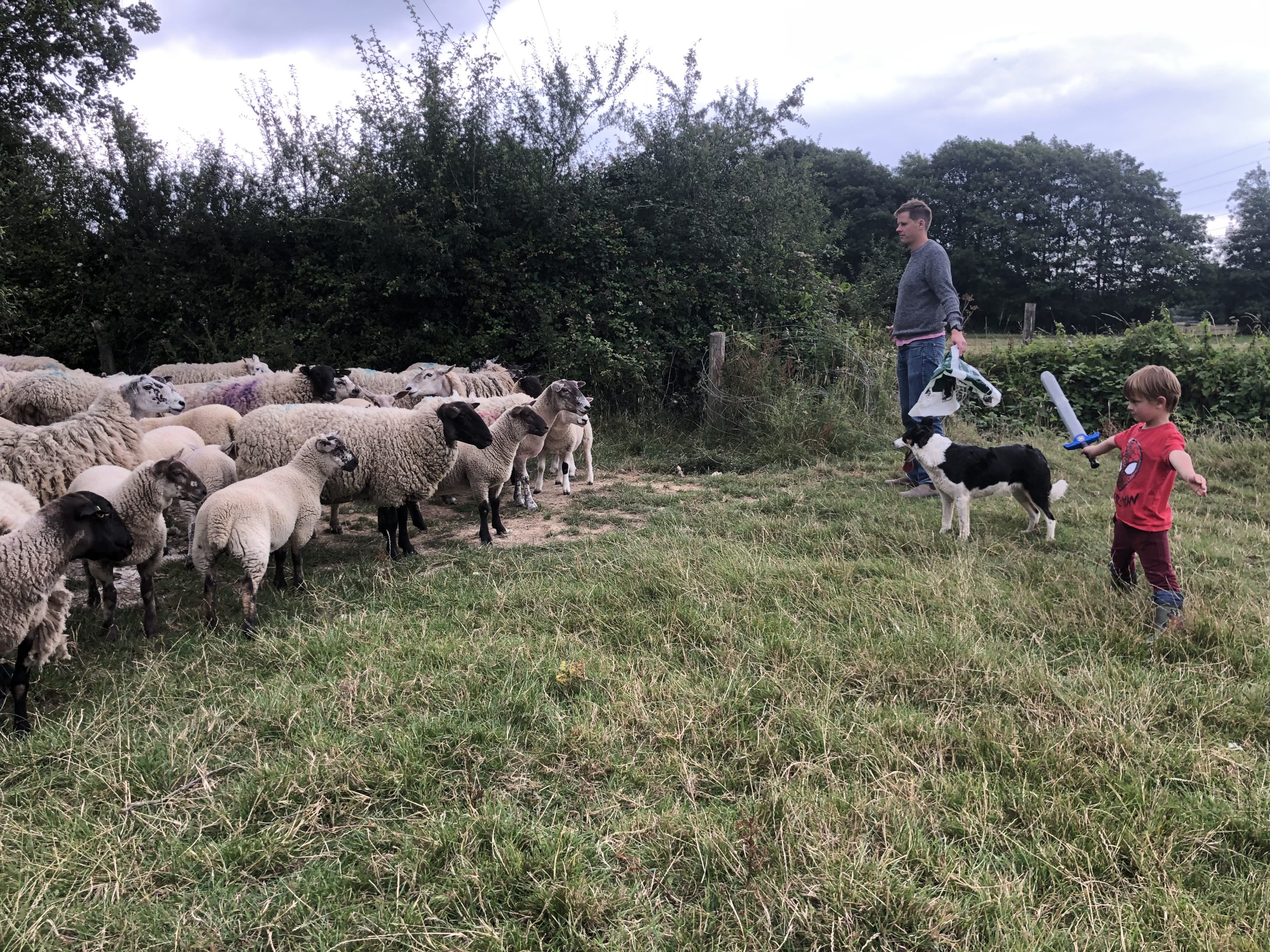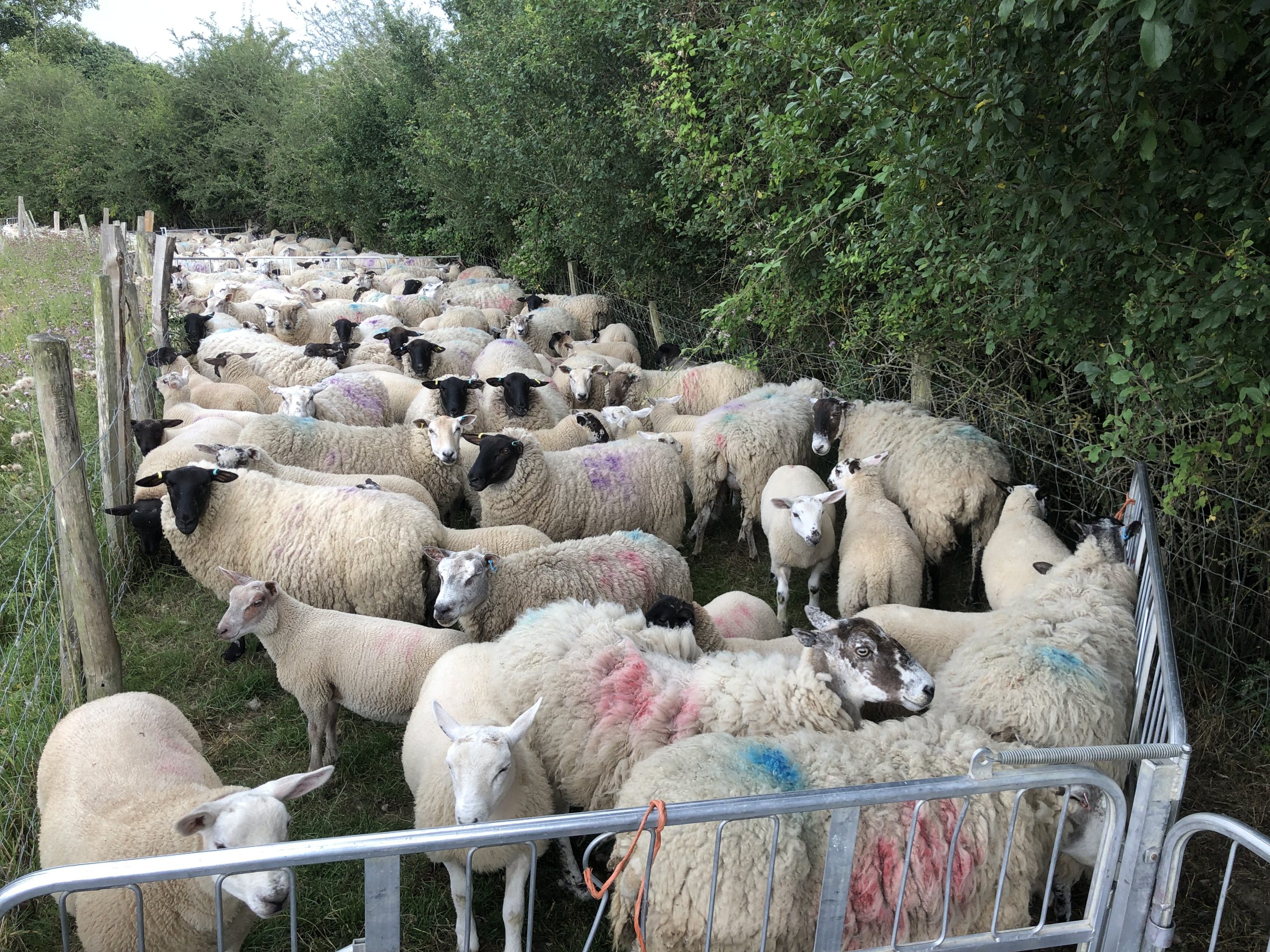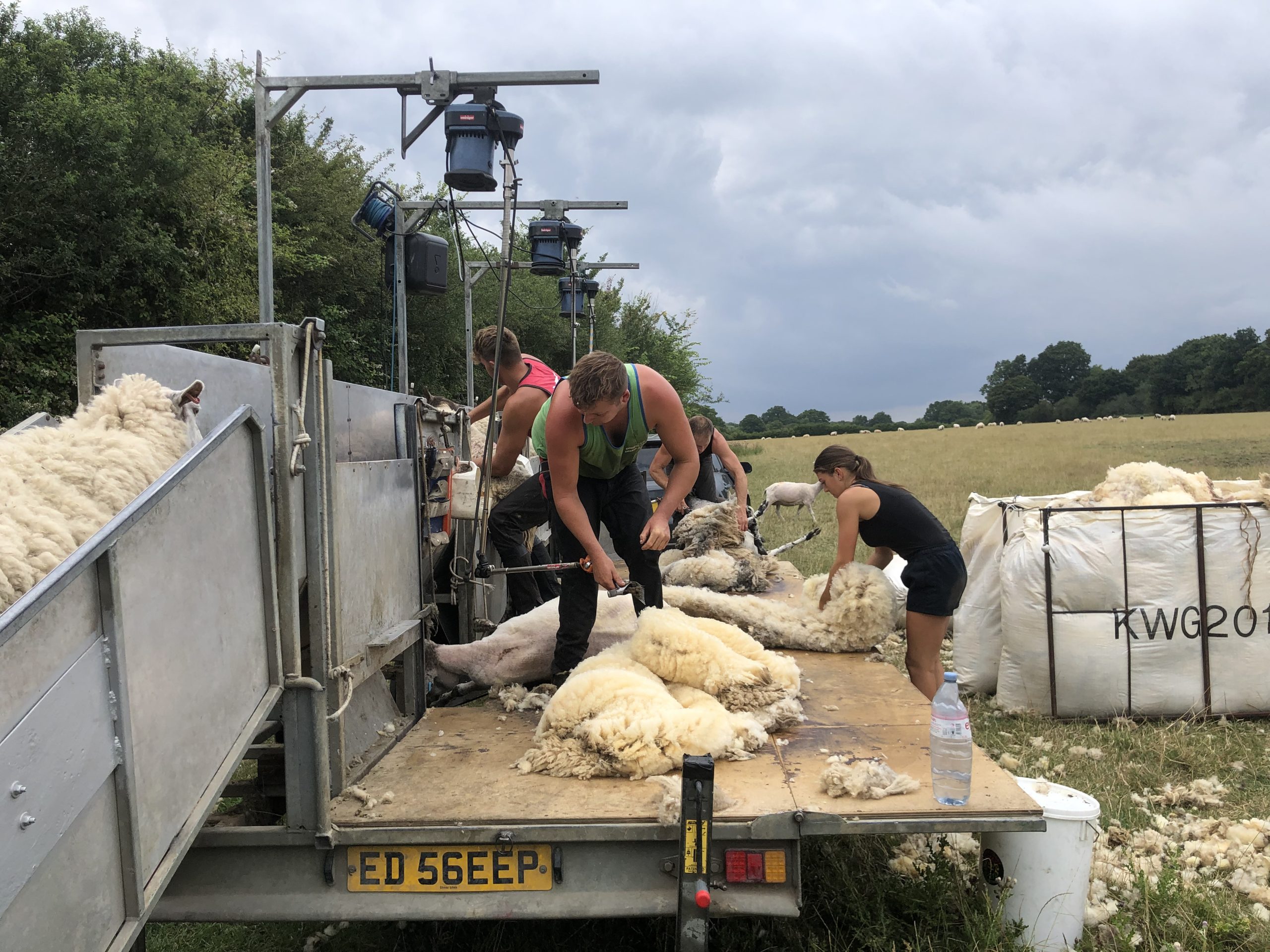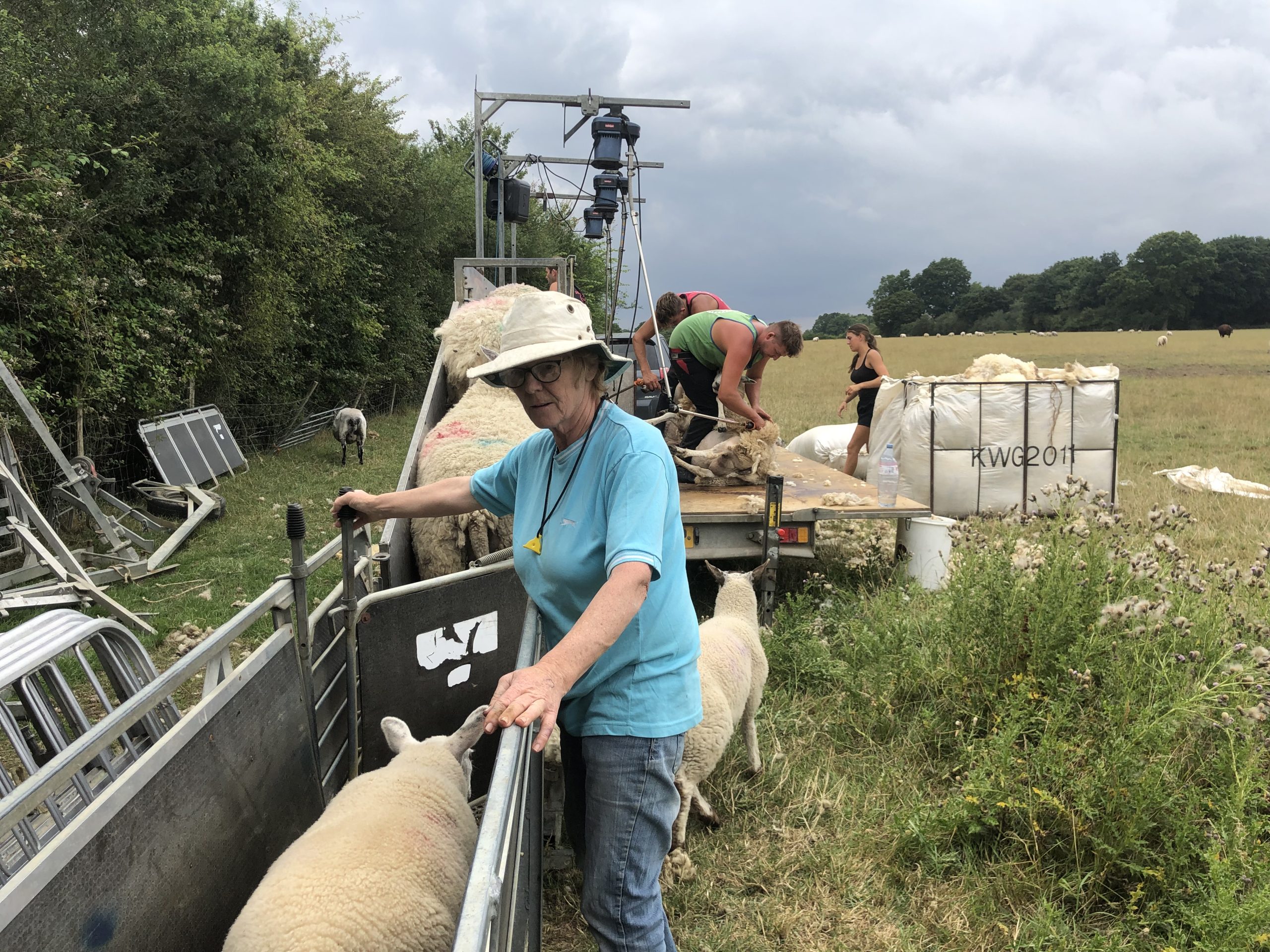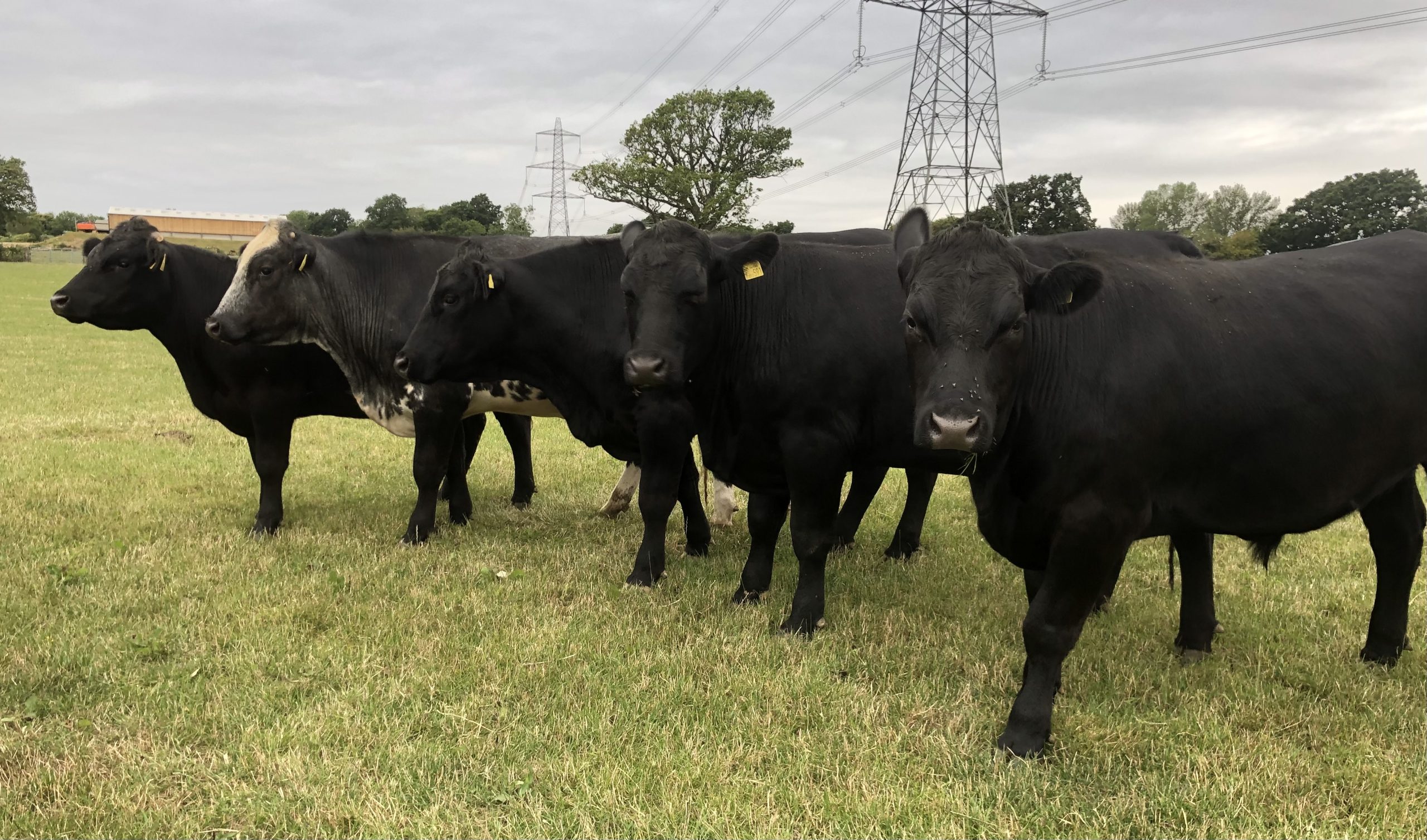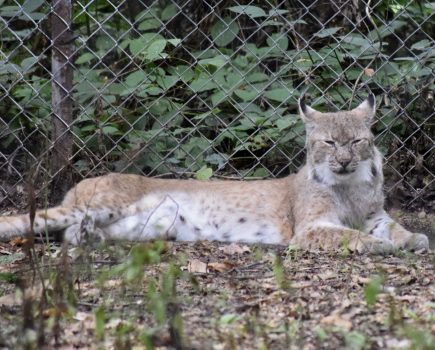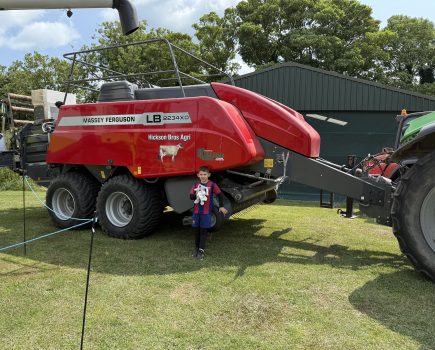For good behaviour, the grandchildren get stickers to apply to charts on the fridge door, but my own rewards live inside the fridge. A cold bottle of beer takes a lot of beating, refreshing and restorative it somehow makes even the most testing of days feel not quite so bad.
Recovered from my injuries, I’m back doing stock work, while the men are working hard in their nice cool cabs, finishing off the haymaking and cutting rushes for winter bedding.
The suckler herd on the Pevensey levels has plenty of grass in front of it and the cattle are behaving relatively well. The store cattle around home are more mischievous. There are three different groups on one farm and their numbers are constantly fluctuating as some determined characters are choosing to swap groups. This isn’t such a problem, but when one heifer decides to go adventuring on her own it’s a different matter.
‘Miss Naughty’ crossed the stream, wandered through the brooks and then headed up through a wood and joined a flock of sheep. On the way she passed through three electric fences and was nonchalantly grazing on less (but presumably tastier) grass than ours. When I first spotted her she was a speck in the distance; our neighbours do have some black sheep and at first I thought one had grown well, until it dawned on me it was my missing heifer.
I tried enticing her back the way she’d come with of a bucket of food. She followed me well until I got to the wood. No amount of cajoling persuaded her to retrace her steps. I then tried stern words, stick waving and Brie (sheep/cattle dog) to no avail, so I had to wait for reinforcements.
So when we should have been eating our evening meal, other half and I were loading and unloading cattle hurdles, strategically parking the livestock trailer, building a pen and patiently waiting for ‘Miss Naughty’ to venture into our trap. Eventually she was outwitted and loaded relatively calmly, her colleagues greeting her noisily as she rejoined them. What a relief when next day all were present and correct.
While I was out of action my son-in-law kindly helped out with lookering, which includes feeding the fattening cattle. The troughs are out in the field and the cattle soon appear when they hear Shrek (ATV). When these animals crowd around you while you’re putting the food in, their sheer size can be intimidating.
I was impressed that son-in-law was unfazed by this. I was, however, horrified one day when he casually mentioned an extra animal had appeared, which he described as “a bit strange because it was sporting a ring in its nose” as if discussing the latest cattle accessory. He was oblivious of the implication. Other half decided this needed urgent investigation and sure enough we had gained a visiting bull. Luckily this was a placid explorer who was delighted to tuck into a free meal. When we tracked down his owner he was soon retrieved.
This incident occurred not many days after the Sunday Times ran a feature entitled Natural Born Killers with a glossy picture on the front of the magazine of a group of five cattle looking curiously at the photographer. Incidentally I observed that not one of these cattle appeared to have one, let alone two, official tags in its ears.
Inside there was another picture of a cow with the markings of a skull and cross bones on her hide and a headline Get off my land. Ramblers beware: there’s a new killer in the countryside. This kind of media hype is not helpful, and it made me rather sad for the cattle as well as the people involved as I read the harrowing stories. Cows deserve respect; they’re large and curious and can display strong protective maternal instincts.
As with all species, some are more aggressive than others and a few are darn right malicious. We once bought an in-calf heifer who turned out to be over-zealous once calved; she was very soon converted into meat.
It’s never worth taking a risk. Farmers should act responsibly, and walkers need to understand the best course of action when they encounter cattle on footpaths. Better dialogue between farmers and walkers (who are potential customers), should be encouraged. Educating footpath users about the realities of livestock, food production and how the countryside works is important to counteract misinformation.
The suggestion of fencing off footpaths is not practical. Maybe if it were easier to create temporary footpath diversions, some disasters could be avoided. Frequent TB testing doesn’t help to enhance the cattle/human relationship. From the cattle’s perspective, being herded up and pushed through a race and receiving two injections probably doesn’t endear humans to them. That said, most farmers have a good working relationship with their animals, which makes this negative media reporting all the more disappointing.
Our cattle came over to watch proceedings while the shearing gang was working. I’m not sure if the cattle were attracted by the music thumping out of the shearers’ boom box or whether they were just fascinated by the art of shearing. I was busy drafting off the lambs but when I glanced away from my task, distracted by the cattle audience, one nifty ewe slipped out with the lambs. That was annoying, because now yours truly will have to get her shears out.
Considering wool’s environmental and sustainability credentials, it remains a stubbornly undervalued product. “High processing costs and weak consumer demand” are blamed. British Wool sent members a letter updating producers on the global wool market. Also enclosed was a booklet explaining the different marketing campaigns being run. British Wool’s Chief Executive Officer is optimistic for the future; let’s hope he’s right.
The fields of corn around here look to be ripening fast. On 3 July, just outside Ringmer, I spotted a combine harvester in action. Now it’s harvesting time, the weather is forecast to be more unsettled. I don’t suppose anyone went into farming because they wanted an easy option.
An occasional reward is justified, I’m just going to check out our fridge.
Safe, happy harvesting.
- The cattle came to watch
- Cattle keeping cool
- Suckler herd on the Pevensey levels
- Gathering the flock
- Getting the flock penned
- Flock penned ready for shearing
- Shearing in progress
- Drafting the lambs off

